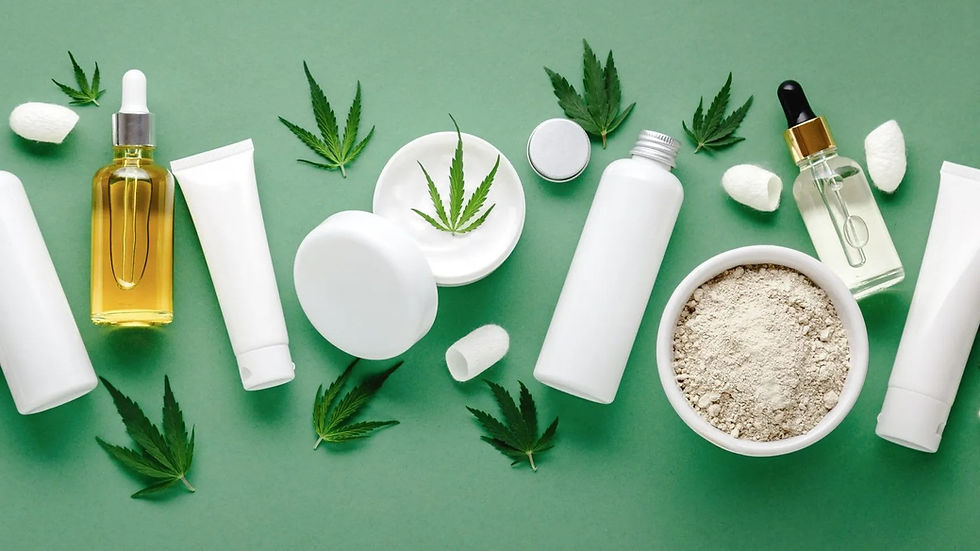Do Other Plants Produce Cannabinoids Besides Marijuana?
- Terp Topia
- Apr 25, 2022
- 3 min read

You’re probably already familiar with cannabinoids like THC and CBD that is produced in cannabis plants. That’s just a small part of the bigger picture. There are over a hundred different cannabinoids that interact with our bodies in different ways. But do other plants produce cannabinoids besides marijuana?
Cannabinoids, Phytocannabinoids, and Endocannabinoids
Cannabinoids
Cannabinoids is an umbrella term that covers both of the terms below. In the broadest sense, they’re a class of lipophilic molecules that have the ability to interact with the ECS. These can be produced by many biological species (plant and mammal) and help regulate and/or balance some biological functions.
Phytocannabinoids
This category includes any cannabinoid produced by plants. This is where you’ll find popular cannabinoids like THC, CBD, THCV, CBG, etc. There have been, however, over a hundred different phytocannabinoids discovered so far.
Endocannabinoids
These are cannabinoids produced from within the mammalian bodies. This includes important compounds like anandamide and 2-AG. Endocannabinoids play a pivotal role in bodily homeostasis, and because our bodies already produce and use cannabinoids, the endocannabinoid system already has receptors with which phytocannabinoids can interact.
According to the British Journal of Pharmacology, “in the last few years, several non-cannabinoid plant natural products have been reported to act as cannabinoid receptor ligands. This prompts us to define ‘phytocannabinoids’ as any plant-derived natural product capable of either directly interacting with cannabinoid receptors or sharing chemical similarity with cannabinoids or both.” We’ll be talking about some of these “non-cannabinoid” plant compounds below.
So, while compounds like terpenes, flavonoids, and alkamides are separate from cannabinoids, they’re an important part of the conversation because of how they interact with the endocannabinoid system AND with cannabinoids.
Black Pepper and Beta-Caryophyllene
Beta-Caryophyllene is technically bicyclic sesquiterpene,although its presence in many edible plants PLUS the way it interacts with the ECS also categorizes it as a dietary cannabinoid (1).
Although BCP is not psychoactive. This feature does give it several properties that make it a good candidate for therapeutic use. According to one study, beta-caryophyllene “strongly reduces the carrageenan-induced inflammatory response in wild-type mice but not in mice lacking CB(2) receptors, providing evidence that this natural product exerts cannabimimetic effects in vivo. These results identify (E)-BCP as a functional nonpsychoactive CB(2) receptor ligand in foodstuff and as a macrocyclic antiinflammatory cannabinoid in Cannabis.”
Cacao Plants
Turns out that chocolate doesn’t just make us feel good because it tastes great. “Cacao and its derivatives cocoa and chocolate contain N-linoleoylethanolamide and N-oleoylethanolamide, compounds which inhibit anandamide breakdown, as well as variable amounts of anandamide” (3).
Anandamide is an endocannabinoid our bodies use as messenger molecules. It plays an important role in pain, depression, appetite, memory, and more.
(Echinacea) Produces Alkamides
While certain species produce more than others, at least three different species of Echinacea produce compounds called alkamides. “These lipide-like compounds bind the human CB2 receptors, acting as full agonists with more selectivity for CB2…compared to CB1 receptors” (4).
There are additional compounds that some believe may contribute to its medicinal properties, but alkamides closely resemble two endocannabinoids (anandamide and 2-AG).
This feature allows them to interact with our endocannabinoid system in much the same way that both cannabinoids and endocannabinoids do.
MANY Plants Produce Cannabinoids Other Than Marijuana!
This is just a small glimpse into the big wide world of cannabinoids. There are several varieties of mushrooms, teas, vegetables, and flowers that also produce phytocannabinoids or non-cannabinoid compounds that interact with the ECS.





Comments